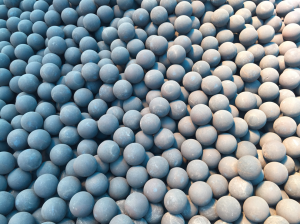3 Preparation Methods of Zirconia Grinding Media

Zirconium oxide is a material well suited as a grinding medium and it can be cylindrical or spherical in shape. Generally, high-quality microcrystalline zirconia grinding media is formed by using yttria-stabilized zirconia (Y-TZP) ultrafine powder as raw material and then densified by high-temperature sintering (1400-1600 ° C), and then self-grinding or adding super fine abrasive polishing. The zirconia grinding media may have various sizes of 0.05 mm or more depending on the requirements. A brief overview of several molding processes common to ceramic media balls is provided below. Further Reading: What Are the Ceramic Materials Used as Grinding Media
Pressing
This is a common molding method for large-size ceramic grinding media, mainly including dry pressing (mixing of water or additives of 3%-7%) and isostatic pressing (water content of powder or additives less than 3%). Dry pressing has the characteristics of convenient operation, simple technology, and low capital investment. However, due to the uneven pressure distribution, this method will result in the inconsistent internal distribution of the green body, which will affect the overall performance of the product. In actual production, the density of the green body is often increased by increasing the pressure. But the pressure is not as large as possible. When the limit pressure is exceeded, the pressure will decrease the density of the solid, which is caused by the spallation. The isostatically pressed green body has high strength, high density and uniformity, and can prepare high-performance and high-quality grinding media balls. Therefore, the industry can adopt two methods to combine the production of high-performance ceramic balls.

Rolling
In addition to the cold isostatic pressing process, rolling is also an important forming method of ceramic balls. The method has the characteristics of good production equipment, raw materials, simple operation, sphericity and easy sintering. Although the strength of the ball is not as good as the cold isostatic pressure, the preparation cost is low, and balls of various sizes ranging from 0.1 mm to 60 mm can be produced as required. There are two methods of rolling, one is to use the mud to roll into a ball, and the other is to use the powder direct rolling method.
Dropping
Small-sized zirconia grinding media beads (0.05mm to tens of millimeters) can be formed by titration. For example, Advanced Ceramic Materials (ACM) hydrothermally synthesized 6nm high purity ultrafine zirconia is used as raw material. The zirconia ceramic microspheres produced by the titration method can be sintered at a low temperature and have no pores inside, and have high compactness, high strength, high toughness, low wear and the like.
Conclusion
Thank you for reading our article and we hope it can help you to have a better understanding of zirconia grinding media and its preparation method. For more information about ceramic materials, please visit https://www.preciseceramic.com/.
{{item.content}}
LEVE A REPLY
{{item.children[0].content}}
{{item.content}}
LEAVE A REPLY
SUBSCRIBE OUR NEWSLETTER
- AlN Ceramic Substrates: Enabling Next-Gen Electrostatic Chucks
- The Amor of Semiconductor Tools: Why High-Purity Al2O3 & AlN Are Preferred for Plasma Process Chambers
- Silicon Carbide - Ultra-High Temperature Ceramics for Extreme Environments
- Aluminum Oxide Ceramics: Properties and Applications
- Boron Nitride Coatings: The Solution for Molten Metal Applications










